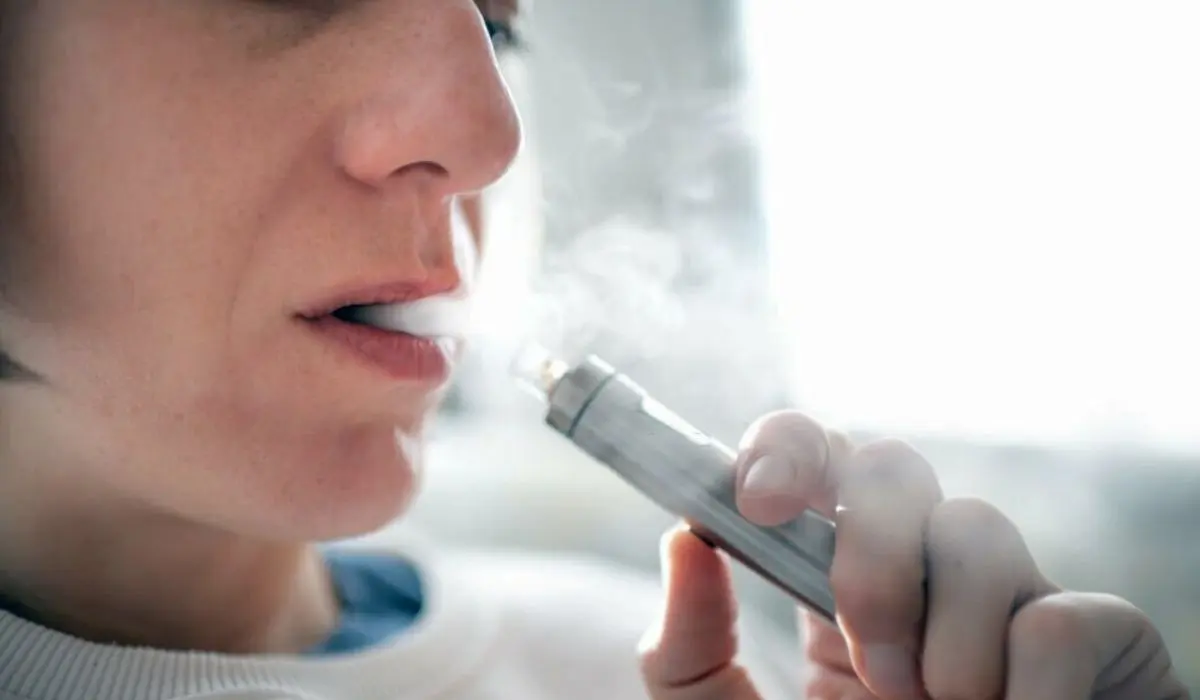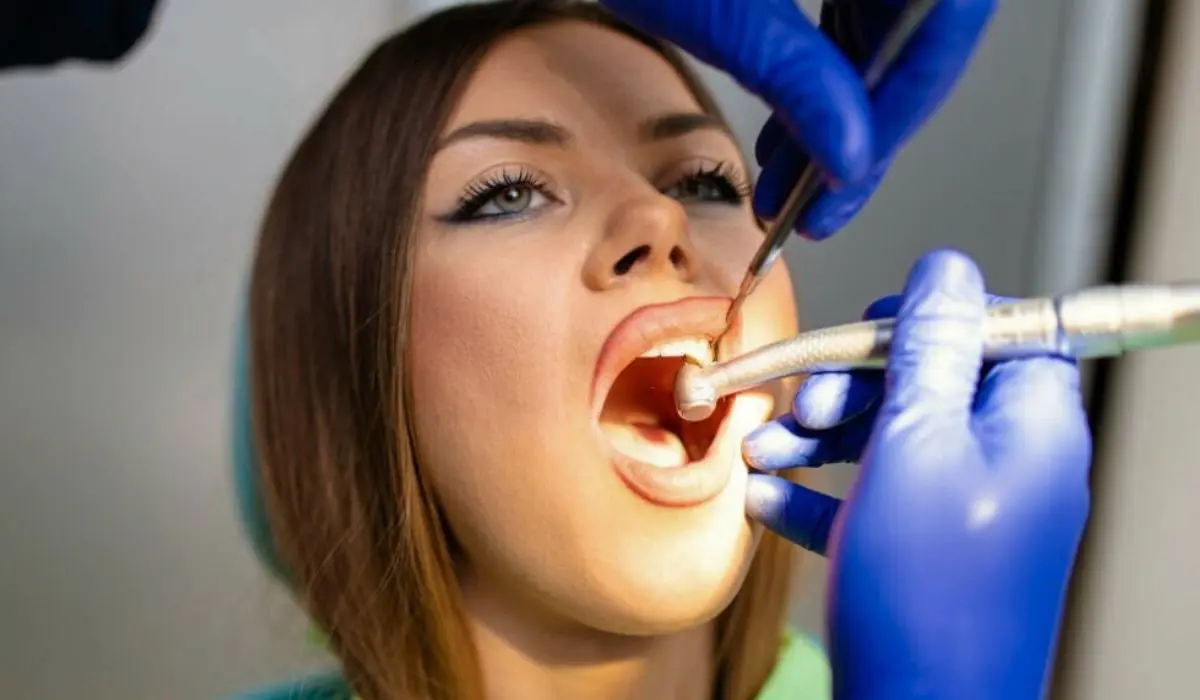Vaping refers to inhaling and exhaling the vapor produced by an electronic cigarette or similar device. These devices, often called e-cigarettes, vape pens, or electronic nicotine delivery systems(ENDS), heat a liquid to create an aerosol which is then inhaled. Though it has been promoted as a less harmful alternative to smoking, the long-term effects of vaping are still under investigation. However, it does leave stains on the teeth and is not easy to remove.
Why Does A Vape Pen Cause Stains On Teeth?
Like traditional cigarettes, it can contribute to teeth staining through several mechanisms which are –

1. Nicotine content– Nicotine is a common component in many vape pens and can also contribute to teeth staining and yellowing over time.
2. Propylene Glycol and Vegetable Glycerin– The base liquids in the vape juice can also play an important role. When they come into contact with the teeth, they can absorb water from the enamel, leading to dehydration and potentially making the teeth more prone to staining.
3. Flavorings– Many vape liquids contain flavorings that have some compounds or pigments that can contribute to staining. Flavors like chocolate, coffee, and certain flavors have permanent staining on teeth.
4. Acidic pH– Some e-liquids may have an acidic pH. Acidic substances can weaken the enamel on teeth, making them more prone to staining. Additionally, acidic conditions can contribute to the demineralization of tooth enamel.
5. Reduced Saliva Production– Nicotine can reduce saliva production. Saliva is essential for maintaining oral health as it helps neutralize acids, cleanse the mouth, and, prevent the accumulation of debris on the teeth. Reduced saliva flow can lead to staining and other dental issues.
How To Remove Vape Stains From Teeth?
1. Hydrogen Peroxide Rinse
Hydrogen Peroxide is a mild bleaching agent that can help remove surface stains. You can make a mouthwash by diluting hydrogen peroxide in a 1:1 ratio with water. Swish the mixture in your mouth for about 30 seconds before spitting it out. Do not swallow the mixture.
2. Baking Soda Paste
Baking soda is a mild abrasive that can help scrub away surface stains. By combining baking soda and a small amount of water, you can make a paste. Gently brush your teeth with this paste, being careful not to scrub too hard to avoid enamel drainage.
3. Activated Charcoal
Activated charcoal is believed by some to absorb stains and toxins. Apply it on the teeth and then remove it after some time.
4. Oil Pulling
Oil pulling involves swishing oil in the mouth for about 15-20 minutes. Some people believe it can help remove toxins and stains.
Also Read:- Best Foods After Tooth Extraction – Reasons For A Tooth To Be Pulled Off
5. Water Flosser
Water flossers can help remove plaque and particles between teeth and along the gumline. Using it regularly can prevent stains.
6. Lemon Juice
Lemon juice mixed with salt can be used to brush the teeth and remove tough stains.
7. Prophylaxis
Dental hygienists can perform dental cleanings. This includes the removal of plaque and tartar from the surfaces of the teeth. It includes scaling, which involves special instruments to remove plaque. After scaling, the teeth are polished using a mild abrasive paste to remove surface stains and create a smooth surface.

8. Ultrasonic Scaling
Dentists use high-frequency vibrations and water to remove plaque.
9. Air Polishing
It is one of the less abrasive methods and includes the suing of air, water, and fine powder. It can also help clean hard-to-reach crevices.
10. Fluoride Treatment
Your dentist may apply a fluoride treatment to strengthen the enamel and make it more resistant to stains and decay.
11. Cosmetic Dentistry
For severe cases, the dental healthcare professional would suggest dental procedures that use veneers or bonding.
12. Professional Teeth Whitening
Using bleaching agents to lighten the color of the teeth. This is an extrinsic approach and not an intrinsic one.
Must Read:- How To Stop Toddler From Grinding Teeth? Discover The Practical Tips!
Conclusion
It’s crucial to communicate openly with the dentist about your concerns and to follow their recommendations for maintaining good oral hygiene. Professional dental cleanings, combined with proper at-home care can be highly effective in managing and preventing teeth stains. Additionally, when using DIY methods, be aware that excessive use of abrasive substances or acidic solutions may harm tooth